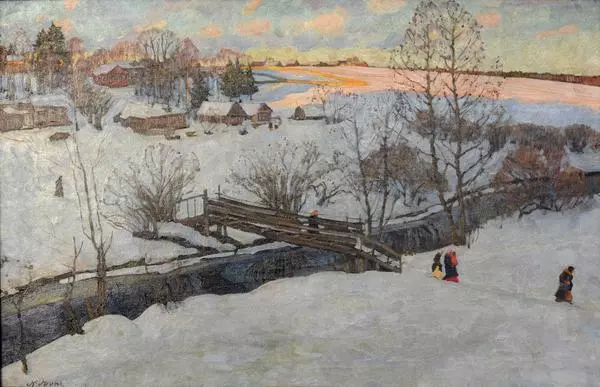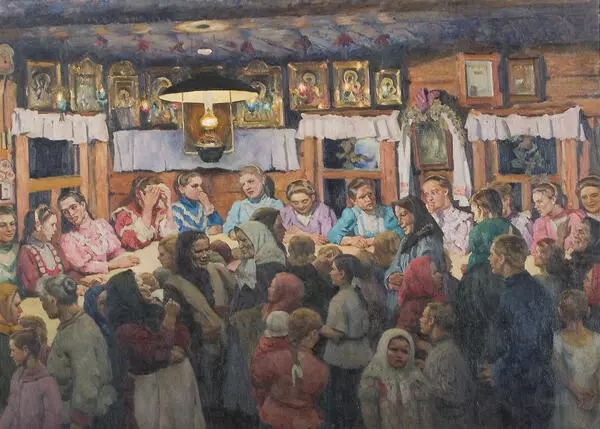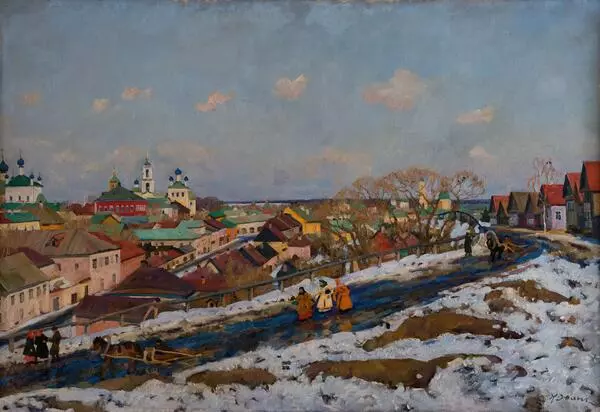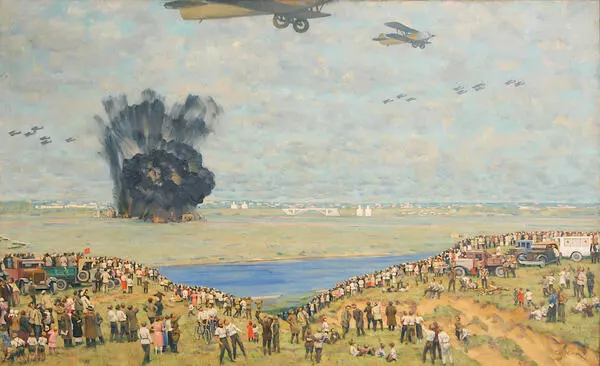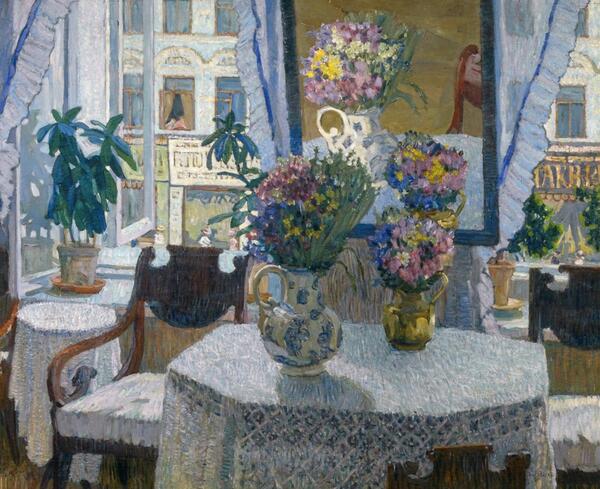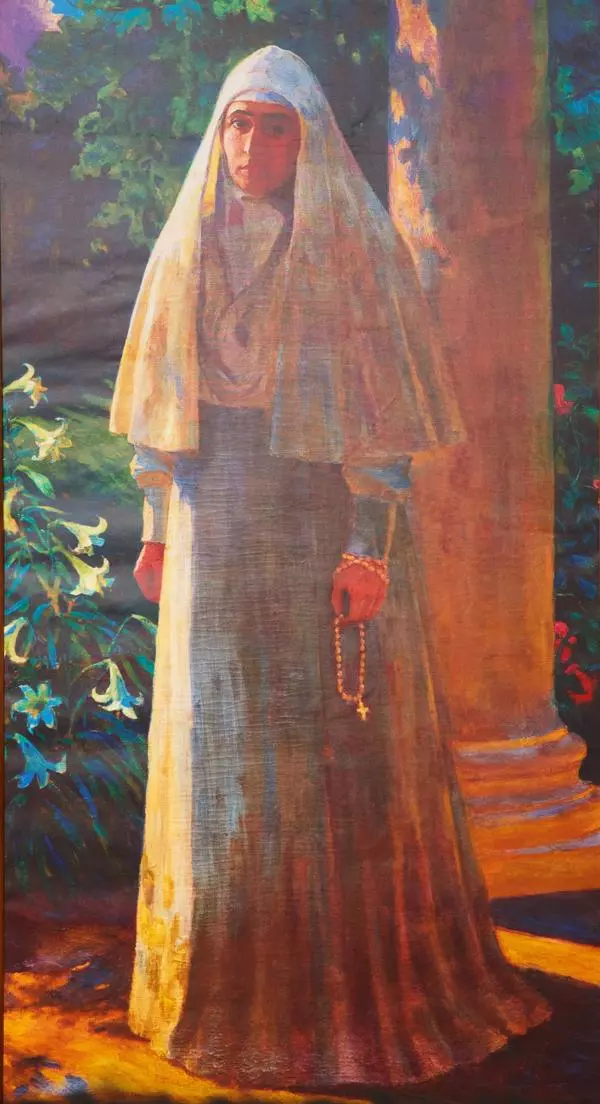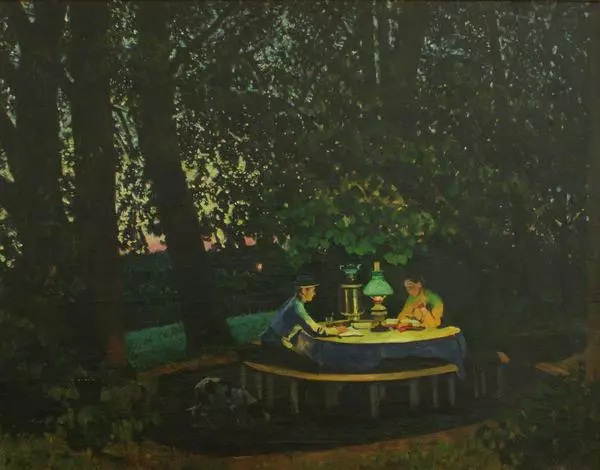The painter Konstantin Fyodorovich Yuon was born in Moscow in 1875. He was a landscape painter, set designer, and a professor at the USSR Academy of Arts.
Between 1892 and 1898, Konstantin Yuon studied at the Moscow School of Painting, Sculpture and Architecture. His teachers included the genre and portrait painter Abram Yefimovich Arkhipov and the set designer Konstantin Alexeevich Korovin. Konstantin Yuon also worked in the studio of the painter and draftsman Valentin Alexandrovich Serov.
The artist worked in scenic design and designed the set for the opera “Boris Godunov” staged at the theater of Sergei Pavlovich Diaghilev in Paris.
Konstantin Yuon traveled extensively throughout Europe. In 1900, he started participating in exhibitions of the Society for Traveling Art Exhibitions and, in 1903, in those organized by the Mir Iskusstva art association. He was also one of the founders of the Union of Russian Artists and worked in various theaters across the country. Between 1900 and 1917, Konstantin Yuon taught at his own studio. In 1945–1947, he worked as the main set designer at the Maly Theater. Between 1948 and 1950, he was the director of the Research Institute of the Theory and History of Arts at the USSR Academy of Arts.
Konstantin Yuon began drawing at an early age. Throughout his career, he worked mainly with pure colors, not mixing paints on the palette, and using contrasting reflections of complementary hues. As a landscape painter and set designer, Konstantin Yuon often created multi-figured festive compositions set against the backdrop of hills with ancient churches, villages, and rivers.
In 1929, Yuon’s painting “Dead Nature (Intimate
World)” was donated to the Pskov Museum by the film actor and director Vladimir
Rostislavovich Gardin. This work by the realist painter Konstantin Yuon is
close to the aesthetic ideals of the Mir Iskusstva (World of Art) and Blue Rose
associations. “Intimate World” stands out from Yuon’s impressionist compositions.
The artist depicted pink male and female shepherds, standing on a crystal-clear
dressing table with a mirror, a burning candle, and a portrait of a man
absorbed in thought. The objects around the figures reveal a second meaning
that is emphasized in the painting’s title.





